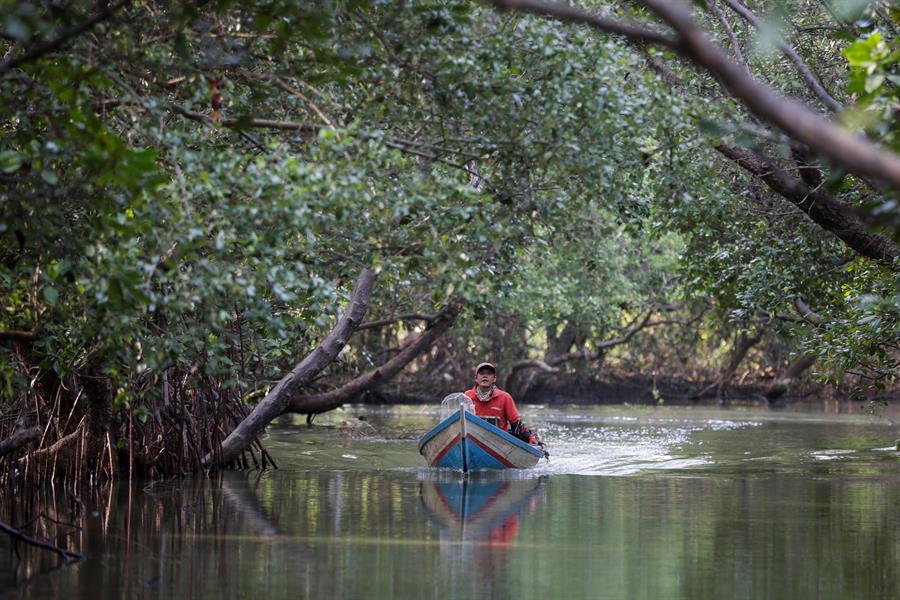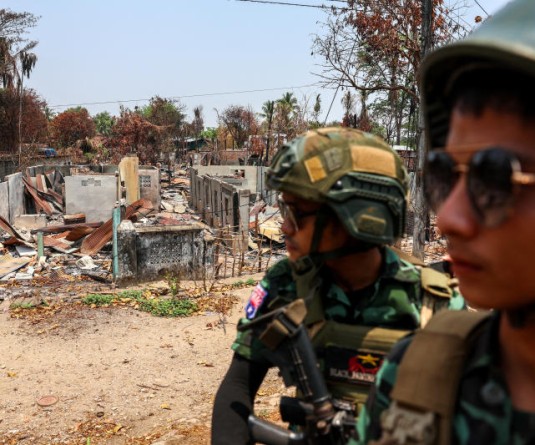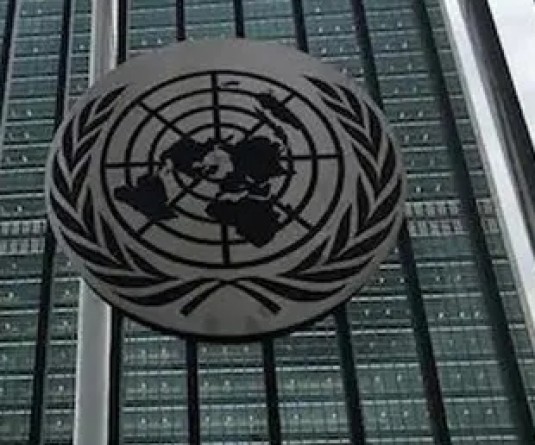Sinking Indonesian villages are casualties of climate crisis

A villager steers his boat on the way to Pantai Bahagia village in Bekasi, West Java, Indonesia, Dec.3, 2019 (issued on Dec.5, 2019). EFE-EPA/MAST IRHAM
Jakarta, December 5 (efe-epa).- Pantai Bahagia in Indonesia has been slowly disappearing under the sea as the climate crisis looms.
Crumbling walls, permanently flooded front yards and houses raised on bamboo poles to prevent water damage are tell-tale signs of the problem the community faces.
Siti Munawaro is a teacher who has been living in a school in the town, which has around 7,000 residents and is located on the northern edge of the West Java province.
He was born in the region 40 years ago when the rising tides had not begun to threaten the community's existence.
The school, a nearby mosque and surrounding houses have been forced to replace their front yards with water tanks, and the peeling plaster and holes in the walls tell the story of a losing battle against the waters.
"When I was young there were no floods, but now they take place twice a month, we have had to dig the school's grounds but water still entered the classrooms," Siti said.
Sonhaji, who goes by a single name, works at a municipal level in conserving the area and estimated more than 1,000 families in five villages have been affected by coastal erosion and close to 100 have had to emigrate.
Since the 1980s, the community has lost 9 kilometers (5.6 miles) of its coast and 3 km of residential areas due to flooding during high tide, which began to get worse in the last decade, according to Ahmad Qurtubi, the town secretary.
The community is the worst-affected among five settlements in the estuary of the Citarum River in northern Java, an area where the government replaced mangroves with fish farms in the 1970s to boost the local economy.
The decision, which is still backed by some residents, removed the natural obstacle provided by the trees and allowed the saltwater to flood the villages.
The Indonesian archipelago, which consists of more than 17,5000 islands and a coastline spread over thousands of km, is one of the world's most vulnerable regions to climate change and rising sea levels.
Sonhaji and Qurtubi have joined a campaign calling for mangroves to be replanted and educate residents about their importance as well as the possibility of generating profits through their fruits, which can be used to make products such as syrup, sweets and biscuits.
Since 2013, around 300,000 new trees have been planted out of a target of two million.
The task has been difficult due to a conflict between the local government and some of the residents, who still prefer fish farms over mangroves and believe authorities might dispossess them of their lands if the area is declared a protected zone.
"People think that the forest doesn't give money and fish farms do," Qurtubi said.
Researcher Bambang Adhitya Nugraha said in an article published earlier this year that the Muara Gembong district, which includes Pantai Bahagia, was sinking below the sea level at a rate of 1,000 hectares per year.
Around 84 percent, or 7,000 hectares, of the original mangrove forest has been cut down, according to 2016 data.
Nugraha emphasised the role of mangrove forests in mitigating the effects of climate change, arguing they not only prevent land erosion in the river's estuary but also hold sizable carbon dioxide deposits.
Close to the sea, the threatening sound of waves reaches the houses closest to the coast, entirely sustained by bamboo poles and connected by an elevated bamboo path over mud.
Agus Gunawan, who lives in a house on the edge of the sea in Pantai Bahagia, said the houses are situated in an area where the invading sea has severely affected some of the fish farms.
He said the fish catch had reduced from 20 or 30 kilograms (44-66 pounds) a day to around 5 kg, adding that if the advancing sea was not checked, they might be forced to move.
"While the water lets me, I will continue to live here," Gunawan added.





